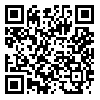Volume 22, Issue 3 (September 2024)
Iranian Rehabilitation Journal 2024, 22(3): 359-374 |
Back to browse issues page
Download citation:
BibTeX | RIS | EndNote | Medlars | ProCite | Reference Manager | RefWorks
Send citation to:



BibTeX | RIS | EndNote | Medlars | ProCite | Reference Manager | RefWorks
Send citation to:
Mohamadian F, Farsi A, Abdoli B. The Use of Mirror Therapy in Children With Physical Disabilities: A Scoping Review. Iranian Rehabilitation Journal 2024; 22 (3) :359-374
URL: http://irj.uswr.ac.ir/article-1-1898-en.html
URL: http://irj.uswr.ac.ir/article-1-1898-en.html
1- Department of Cognitive and Behavioral Science in Sport, School of Sport Science and Health, Shahid Beheshti University, Tehran, Iran.
Abstract: (3652 Views)
Objectives: This scoping review allows a better understanding of current evidence regarding mirror therapy (MT) among children to help the future development of MT intervention protocol on children.
Methods: PubMed, Science-Direct, Web of Science and ProQuest databases were searched from January 2005 to January 2023 for interventions within the scope of MT for children. Google Scholar was also scanned for additional resources. The process of the present study was according to guidelines of the preferred reporting items for systematic reviews and meta-analyses extension for scoping reviews. The main inclusion criteria were articles in English and Persian language and peer-reviewed empirical studies of MT for children. This study charted methodological information from articles according to participant characteristics, design, intervention, and outcome measures.
Results: Of 18 studies that were included in this scoping review, 17 studies were conducted in children with hemiplegic cerebral palsy, and only two studies were in other conditions. A total of 16 articles were randomized controlled clinical trials, one case study and one single subject. Meanwhile, 33 outcomes were in the body structures (BS) and functions level, and 10 outcome measures were in the activities and participation levels of the International classification of functioning.
Discussion: The review indicates that in future studies, it is necessary to pay more attention to other disorders beyond hemiplegic cerebral palsy; furthermore, levels of activity and participation as the outcome need to be used more.
Methods: PubMed, Science-Direct, Web of Science and ProQuest databases were searched from January 2005 to January 2023 for interventions within the scope of MT for children. Google Scholar was also scanned for additional resources. The process of the present study was according to guidelines of the preferred reporting items for systematic reviews and meta-analyses extension for scoping reviews. The main inclusion criteria were articles in English and Persian language and peer-reviewed empirical studies of MT for children. This study charted methodological information from articles according to participant characteristics, design, intervention, and outcome measures.
Results: Of 18 studies that were included in this scoping review, 17 studies were conducted in children with hemiplegic cerebral palsy, and only two studies were in other conditions. A total of 16 articles were randomized controlled clinical trials, one case study and one single subject. Meanwhile, 33 outcomes were in the body structures (BS) and functions level, and 10 outcome measures were in the activities and participation levels of the International classification of functioning.
Discussion: The review indicates that in future studies, it is necessary to pay more attention to other disorders beyond hemiplegic cerebral palsy; furthermore, levels of activity and participation as the outcome need to be used more.
Keywords: Children, Mirror therapy (MT), Scoping review, Rehabilitation, international classification of functioning, disability and health (ICF)
Article type: Reviews |
Subject:
Neurorehabilitation
Received: 2023/08/12 | Accepted: 2023/10/30 | Published: 2024/09/1
Received: 2023/08/12 | Accepted: 2023/10/30 | Published: 2024/09/1
Send email to the article author








